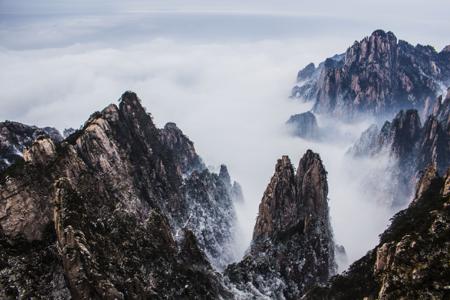【小站原创】官方真题Official7托福听力Lecture4文本+真题+答案解析
- 2018年01月22日15:30 来源:小站整理
- 参与(0) 阅读(36182)
现在大家在进行托福备考时官方真题Official托福模考软件相信是大家用的最多的工具了,对于托福成绩的提升是非常有帮助的。托福听力可以说是整个托福考试当中比较重要的一个部分,如何利用现有资料官方真题Official模考软件来提升大家的托福成绩呢?今天小编在这里整理了官方真题Official7托福听力Lecture4文本+题目+答案解析来分享给大家,希望对大家托福听力备考有帮助。
官方真题Official7托福听力Lecture4原文文本
Narrator: Listen to part of a lecture in a Geology class.
Pro: Last time, we started to talk about glaciers and how these masses of ice form from crystallized snow, and some of you were amazed at how huge some of these glaciers are. Now, even though it may be difficult to understand how a huge mass of ice can move or flow, it’s another word for it, it’s really known that no secret that the glaciers flow because of gravity. But how they flow, the way they flow, needs some explaining.
Now, the first type of glacier flow is called: basal slip. Basal slip or sliding as it’s often called, basically refers to the slipping or sliding of a glacier across bedrock, actually across a thin layer of water on top of the bedrock. So, this process shouldn’t be too hard to imagine. What happens is that the ice at the base of the glacier is under a great deal of pressure – the pressure coming from the weight of the overlying ice.
And you probably know that under pressure, the melting temperature of water, of the ice I mean, is reduced. So, ice at the base of the glacier melts, even though it’s below zero degree celsius. And this results in a thin layer of water between the glacier and the ground. This layer of water reduces friction is... is like a lubricant. And it allows the glacier to slide or slip over the bedrock. OK?
Now the next type of movement we will talk about is called: deformation. You’ve already known that ice is brittle, if you hit it with a hammer, it will shatter like glass. But ice is also plastic, it can change shape without breaking. If you leave, for example, a bar of ice supported only at one end, the end, the unsupported end will deform under its own weight.
It’ll kind of flatten out at one end, get distorted, deformed. Think of deformation as a very slow oozing. Depending on the stresses on the glacier, the ice crystals within it reorganize. And during this re-organization the ice crystals realign in a way that allows them to slide pass each other. And so the glacier oozes downhill without any ice actually melting.
Now, there are a couple of factors that affect the amount of deformation that takes place or the speed of the glacier’s movement for example. Deformation is more likely to occur the thicker the ice is, because of the gravity of the weight of the ice.
And temperature also plays a part here, in that cold ice does not move as easily as ice that is close to the melting point. In fact, it is not too different from… the way oil is, thicker at lower temperatures. So, if you have a glacier in a slightly warmer region, it will flow faster than a glacier in a cooler region.
Ok, um… Now, I’d like to touch briefly on extension and compression. Your textbook includes these as types, as a particular type of glacier movement, but you will see that there are …as many textbooks that omit it as a type of movement as include it. And I might not include it right now, if it weren’t in your textbook.
But, basically, the upper parts of glaciers have less pressure on them. So, they don’t deform easily, they tend to be more brittle.And crevasses can form in this upper layers of the glacier. When the glacier comes into contact with bedrock walls or is otherwise under some kind of stress, but can’t deform quickly enough.
So, the ice would expand or constrict, and that can cause big fissures big cracks to form in the surface layers of the ice, and that brittle surface ice moving is sometimes considered a type of glacier movement depending on which source you are consulting.
Now, as you probably know, glaciers generally move really slowly. But sometimes, they experience surges, and during these surges, in some places, they can move at speeds as high as 7000 meters per year. Now, speeds like that are pretty unusual, hundreds of times faster than the regular movement of glaciers, but you can actually see glacier move during these surges, though it is rare.
查看官方真题Official7托福听力Lecture4的题目请进入下一页→→→






























